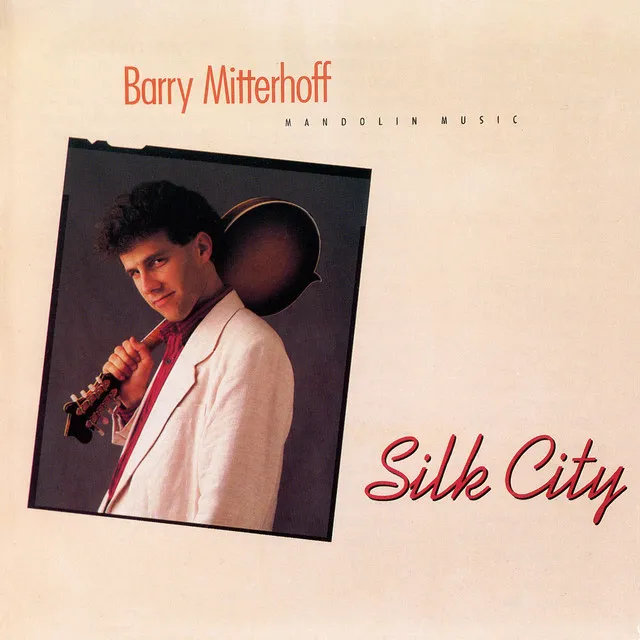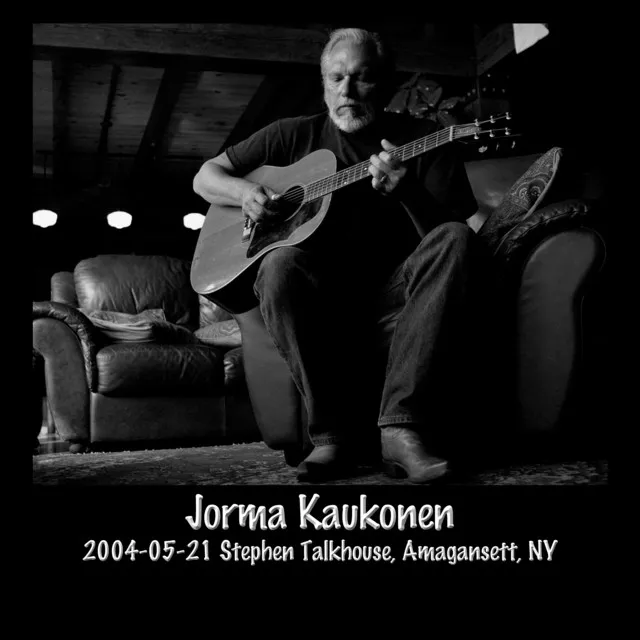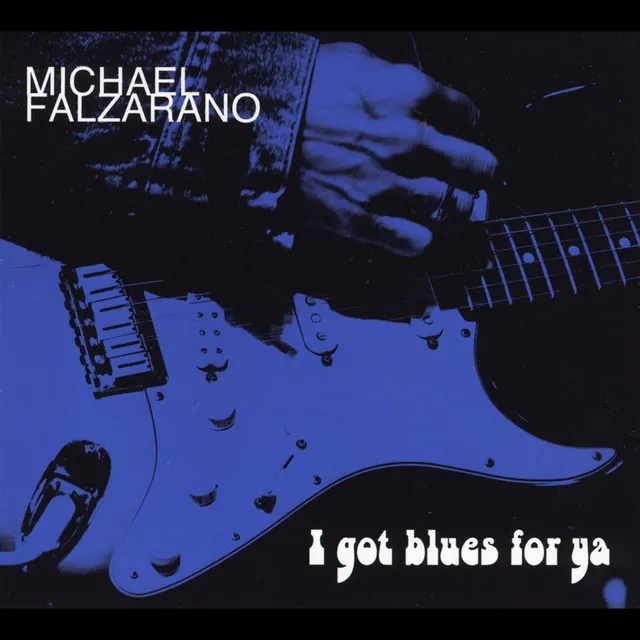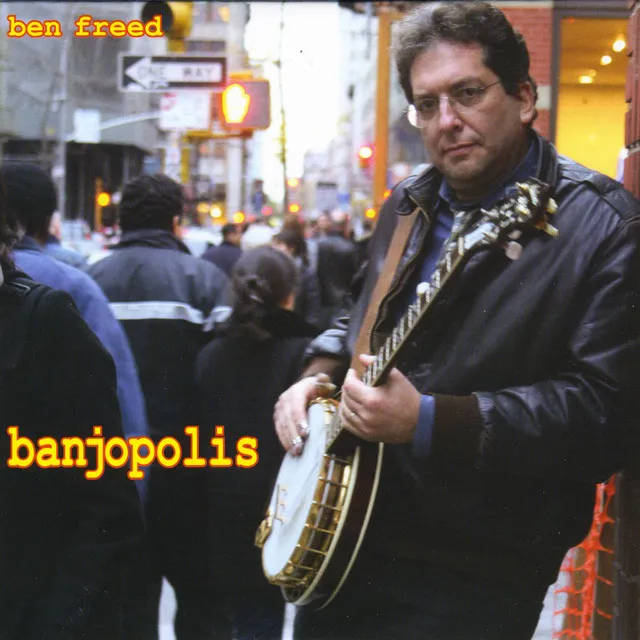Based out of a small town in New Jersey, Barry Mitterhoff is a mandolinist who absolutely refuses to be pigeonholed into one style, despite the ease with which a writer in this sort of database can click on a key that says bluegrass. Of course, like just about every mandolinist around, Mitterhoff got into bluegrass music and has played his share of it. He became closely associated with banjoist Tony Trischka, who helped take that genre just about as far out as it has ever gone, thus forever associating Mitterhoff with the progressive bluegrass movement and even beyond that, the avant-garde bluegrass movement. He is most certainly being watched by "the bluegrass police," as described by his fellow mandolinist Jimmy Gaudreau, also not a player who liked to do things the way they are supposed to be done in bluegrass. Mitterhoff has become involved in several different styles that are firmly outside the bluegrass camp, working regularly with a klezmer group and through his good sight-reading abilities becoming drawn into both theater and film music. In the film You've Got Mail, it is also a case of "you've got Mitterhoff," as this is one of the Hollywood soundtracks he appears on. And despite whatever connections he has with progressive or avant-garde music of any persuasion, he is also a respected player in the old-time music field, having maintained a long-standing relationship with the wonderful Appalachian singer Hazel Dickens. Meanwhile, he is studying the choro music of Brazil.
Junior high and high school were where the young Mitterhoff began developing enthusiastic interests relating to music. The relationship with one of his closest playing associates, guitarist Danny Weiss, stretches all the way to 1963, and the two began playing music together when they were juniors in high school. By then, it was the late '60s and rock had taken over everything. Mitterhoff introduced his friend to bluegrass as Weiss was still in rock-out mode. As for the mandolin, it was put into Mitterhoff's hands for the first time by his aunt Sylvia Reuben, who played the instrument in the Workman's Circle Orchestra, a 15-piece mandolin group in Newark, NJ. She had taken up mandolin as a teenager. When she heard of her nephew's budding music interests, at that point mostly confined to the guitar like many a teen with rock in his head, she offered him the mandolin and he began to fool around on it. Coincidentally, a guitar teacher named Bob Appelbaum Mitterhoff had recently hooked up with turned out to also play the mandolin and banjo. It was this teacher who played Mitterhoff his first bluegrass mandolin records, and they had a strong effect on him. Weiss, Mitterhoff, and another friend began getting together to play folk, blues, and bluegrass. The friends were also drawn toward country blues and jug band music, and it wasn't until he went away to college that Mitterhoff joined his first out and out bluegrass band. Yet his open-minded attitude was beginning to be forged even then, and instead of narrowing his attention on the "yee-haw!" crowd, he also took in much musical input of a swinging nature from the fine jazz guitarist Ted Dunbar, who was on the music faculty at his college.
Skyline cut its first album in 1977. The band originally consisted of Mitterhoff, Trischka, Weiss plus bassist Larry Cohen (no relation to the low-budget filmmaker), and a female vocalist, first Dede Wyland and then later Rachel Kalem. The band toured and recorded intensely for almost 12 years, including European as well as American barn-storming. In 1989, the band officially called it quits, but in the late '90s, they began working again whenever appropriate, averaging about ten gigs a year. These two different levels of band commitment have had quite a contrasting effect on Mitterhoff's personal life. When the initial decade or more of almost constant touring and involvement with Skyline ended, the mandolinist began expanding his music career so that he might become known as a versatile mandolinist ready to deal with jobs in a wide variety of styles. That way, he felt he could stay put more often in the New Jersey/New York area without going broke. The idea has worked for the most part, the major drawback seeming to be the parking violations that even a relatively unburdened mandolinist unloading his car has to deal with in the Big Apple. Although the Skyline lifestyle wasn't missed, there was no desire to cut connections with the players. Weiss, Cohen, and Mitterhoff continued to play together, forming the group Silk City when they added violinist Marty Laster. This group has recorded several CDs and remains the main outlet for Mitterhoff as a bandleader.
Unlike their earlier, more intense Skyline experience, the Silk City band makes much less demand on the players' time, leaving room for a great deal of freelancing. If the opening description of Mitterhoff's versatility was impressive, bear in mind that was severely edited for purposes of coherency. In reality, this mandolinist has even more projects going on. In the '90s, Mitterhoff's bluegrass activity included touring the U.S. and Europe with the bluegrass singer, banjoist, and bandleader Lynn Morris, whose music is more on the traditional side. He also worked with a Nashville bluegrass singer named Chris Jones, as well as with the previously mentioned Hazel Dickens. He also maintains a relationship with the interesting Tex Logan, a Texas bluegrass musician who is also a theoretical mathematician. Mitterhoff has crossed paths several times with this character, even backing him up with the college bluegrass band the first time it ever got on-stage. In the late '70s, Mitterhoff sometimes worked in a band Logan put together with guitarist and singer Peter Rowan. When Logan relocated to New Jersey a decade later, it was only natural that Mitterhoff resumed a relationship with him. Recording documentation of this collaboration is not so easy to find, consisting solely of an obscure record made and released in England.
Then there is the so-called "New York thing," in other words, professional work in whatever settings an experienced player is able to get his foot in the door of. This includes off-Broadway plays, jingles, and films. On Broadway itself, Mitterhoff was a sub on Adventures of Tom Sawyer. Accordion player Dominic Cortese became a valued associate in the film world. A man who has worked on so many soundtracks that he can't even remember what half of them were, Cortese recommended Mitterhoff to the producers of the gangster comedy Mickey Blue Eyes and other big budget projects have followed. Mandolin picking done for the Oh Brother, Where Art Thou soundtrack wound up on the cutting room floor, unfortunately.
Another great influence and presence on the New York music scene is Italian music, not exactly the style a typical bluegrass picker decides to get involved in. Picking on some tomato sauce commercials actually merged the mandolinist's activities as a session player with his interest in Italian mandolin music, but his playing in this genre is by no means limited to hawking pasta seasonings. He has worked with the group Friti e Latzi, led by Emilise Allesandri, and performing music selected from the early 20th century Italian vaudeville circuit. He also performed on a CD by Neapolitan singer Mary Mancini. These projects by no means represent the end of Mitterhoff's involvement with ethnic music. He has played in a Phillipine mandolin orchestra, done some Brazilian concerts with David Rumpler, and joined the West End Klezmorium, with which he played for six years. And in a move that no doubt greatly pleases his aunt, he has played off and on with the New York Mandolin Symphonette. He also performs with a chamber music group named the Abaca String Band. This group might not play frequently, but the gigs they do are high profile, including a performance at the White House, Alice Tully Hall, andMetropolitan Museum of Art.
In the late '90s, Mitterhoff recorded the Mandolin X 4 project with upcoming mandolinist Todd Collins. Silk City released a new CD in 2000, entitled Time. Along with his performing and recording activities, he also is active as a mandolin teacher and is usually involved with writing arrangements and compositions for ensembles he plays in, this work involving a predictably wide range of material in many genres. ~ Eugene Chadbourne, Rovi

![Merlefest Mando Mania [with Rebecca Lovell, Mike Compton, Darin Aldridge, Tim O'brien, James Nash, Tom Rozum & Barry Mitterhoff]](https://spacemedia.uk/stats/image/ab67616d0000b273dab8297335d240f1e45093fc)




